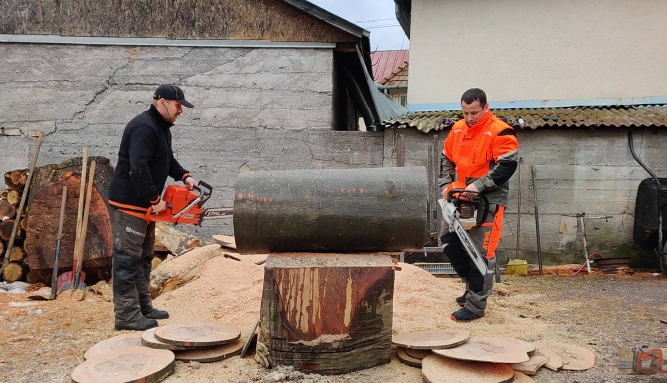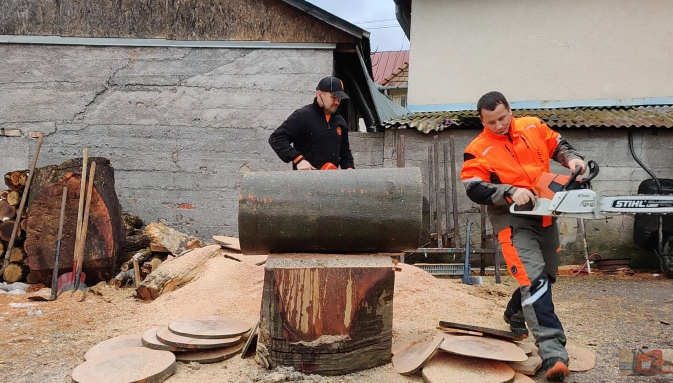
When it comes to professional-grade chainsaws for forestry, logging, and heavy-duty cutting, two names consistently dominate the conversation: STIHL and Husqvarna. Among their most powerful offerings, the STIHL MS 661 C and Husqvarna 395 XP stand out as titans. These chainsaws are built to take on the toughest jobs — felling large trees, bucking thick logs, and enduring extended workdays in rugged environments. But which one is better for you? Let’s break down their features, performance, and key differences to help you decide.
Engine Power and Performance
STIHL MS 661 C
The MS 661 C features a 91.1cc 2-MIX engine, delivering up to 7.2 horsepower. Designed with professional users in mind, this chainsaw provides excellent torque and throttle response. STIHL’s 2-MIX technology also reduces fuel consumption and emissions without compromising power. It’s especially effective for large-scale logging operations and is capable of handling even the hardest woods with ease.
Husqvarna 395 XP
The 395 XP, slightly larger in displacement at 94cc, delivers comparable power at around 6.6 horsepower. Though it has a slightly lower horsepower rating than the MS 661 C, the 395 XP is known for its high torque output, especially at lower RPMs. This makes it ideal for tasks that demand steady, deep cutting power — like slicing through massive hardwood trunks.
Verdict: The MS 661 C has a slight edge in horsepower and fuel efficiency, while the 395 XP provides excellent low-end torque for power-intensive applications.

Weight and Handling
STIHL MS 661 C
Weighing approximately 16.5 lbs (7.5 kg) without the bar and chain, the MS 661 C strikes a balance between power and portability. It also includes STIHL’s ElastoStart and anti-vibration system, making it easier to handle during long sessions. The saw feels balanced in hand and responds quickly to user input, which helps reduce fatigue during extended use.
Husqvarna 395 XP
The 395 XP is slightly heavier at 17.4 lbs (7.9 kg), which may not sound like much but can be noticeable after a full day of cutting. However, it also includes LowVib technology, which effectively reduces vibration for user comfort. That said, its weight and feel are more suited to seasoned professionals with experience in handling large saws.
Verdict: The MS 661 C is a bit lighter and more ergonomically friendly, giving it the advantage in terms of handling and comfort.

Starting System and Ease of Use
STIHL MS 661 C
One of the highlights of the MS 661 C is its M-Tronic electronic engine management system, which automatically adjusts the fuel mixture for optimal performance regardless of elevation or temperature. It also features a decompression valve and ElastoStart handle, which together make starting the engine smoother and easier — especially in cold conditions.
Husqvarna 395 XP
The 395 XP lacks electronic engine management but includes a decompression valve and Smart Start® system, which reduces resistance in the starter cord. However, tuning must be done manually, which might be less convenient in rapidly changing environments.
Verdict: The MS 661 C wins in ease of use with its M-Tronic system, allowing for smarter performance adjustments on the fly.
Fuel Efficiency and Emissions
STIHL MS 661 C
STIHL’s 2-MIX engine is engineered for up to 20% lower fuel consumption and 50% fewer emissions than standard 2-stroke engines. The M-Tronic system also ensures fuel is used efficiently at all times, adjusting automatically based on operating conditions.
Husqvarna 395 XP
While still a fuel-efficient machine for its class, the 395 XP lacks the advanced fuel-management systems found in newer models. As a result, its fuel consumption is slightly higher, and emissions are not as well controlled compared to STIHL’s 2-MIX technology.
Verdict: STIHL leads in fuel efficiency and emissions control, which may be important for long-term operational costs and environmental impact.

Bar Compatibility and Cutting Capacity
STIHL MS 661 C
This chainsaw can handle guide bars from 20 to 36 inches, making it versatile for a variety of cutting tasks. Its power makes it more than capable of running longer bars for large tree felling or milling applications.
Husqvarna 395 XP
The 395 XP also supports long bars, up to 36 inches or more, and can run well with even larger aftermarket setups. It’s a favorite for loggers needing deep-cutting saws in big timber.
Verdict: A draw — both saws are extremely capable when paired with long bars and can take on the toughest jobs in the forest.
Durability and Maintenance
STIHL MS 661 C
Built with a magnesium crankcase, HD2 air filter, and tool-free fuel and oil caps, STIHL’s MS 661 C is designed for durability and quick maintenance. The HD2 filter captures fine dust particles, extending engine life and improving performance over time.
Husqvarna 395 XP
This saw is also built to last, with a magnesium crankcase, three-piece crankshaft, and heavy-duty air filtration system. However, cleaning and maintenance can take slightly more time compared to the STIHL’s quick-access features.
Verdict: Both are built like tanks, but STIHL may offer slightly easier maintenance with its toolless cap system and efficient filter design.

Price and Value
Both saws are premium machines and priced accordingly. As of 2025, the MS 661 C typically retails around $1,300 to $1,400, while the Husqvarna 395 XP ranges from $1,200 to $1,350 depending on configuration and bar length.
While STIHL offers more modern features, Husqvarna is often slightly cheaper, making it a solid value for experienced users who prioritize raw power and torque over convenience features.
Verdict: STIHL offers more tech for the money; Husqvarna offers a time-tested powerhouse for slightly less.

Final Thoughts
Choosing between the STIHL MS 661 C and Husqvarna 395 XP comes down to your specific needs and preferences.
- If you’re looking for smart engine management, better fuel efficiency, and ergonomic handling, the STIHL MS 661 C is the clear winner.
- If you prefer manual tuning, low-end torque, and classic reliability with fewer electronics to worry about, the Husqvarna 395 XP remains a formidable workhorse.
Both are professional-grade saws that can handle the toughest forestry jobs. Whether you’re a seasoned logger, a professional arborist, or a serious landowner, either of these machines will serve you well for years to come.


